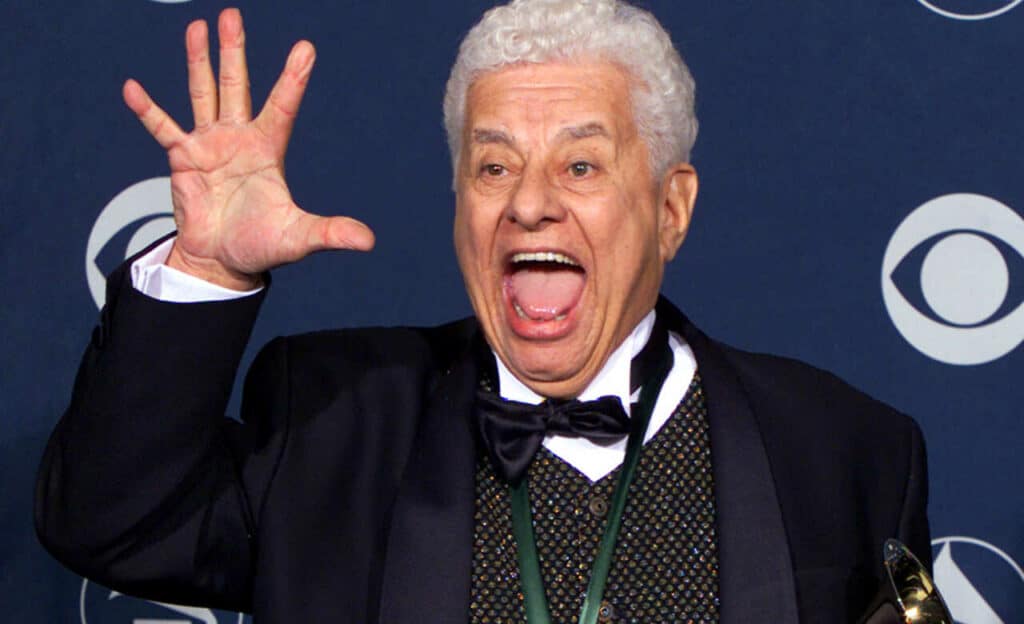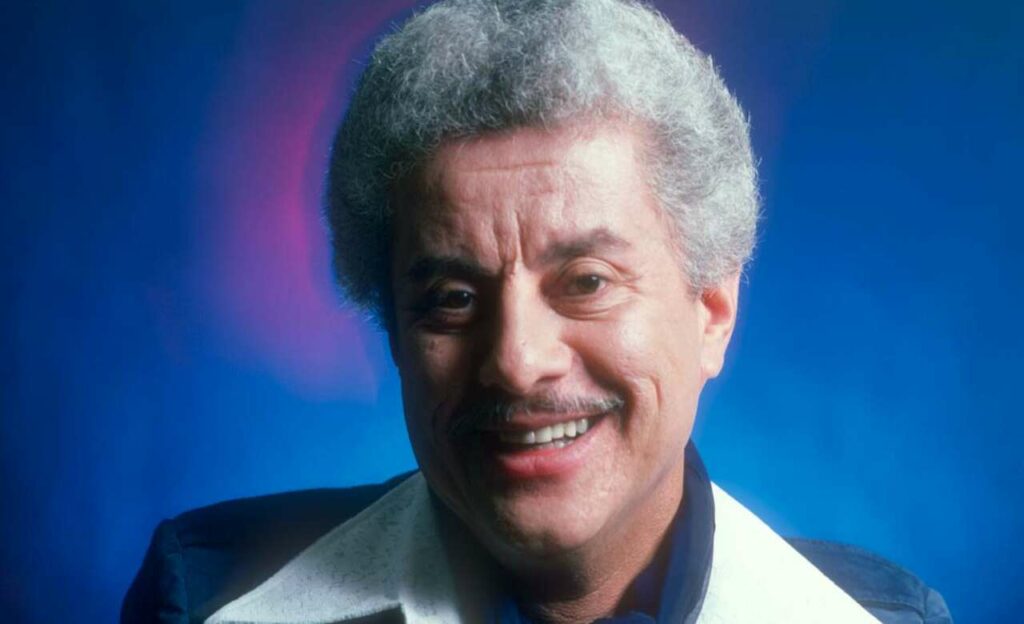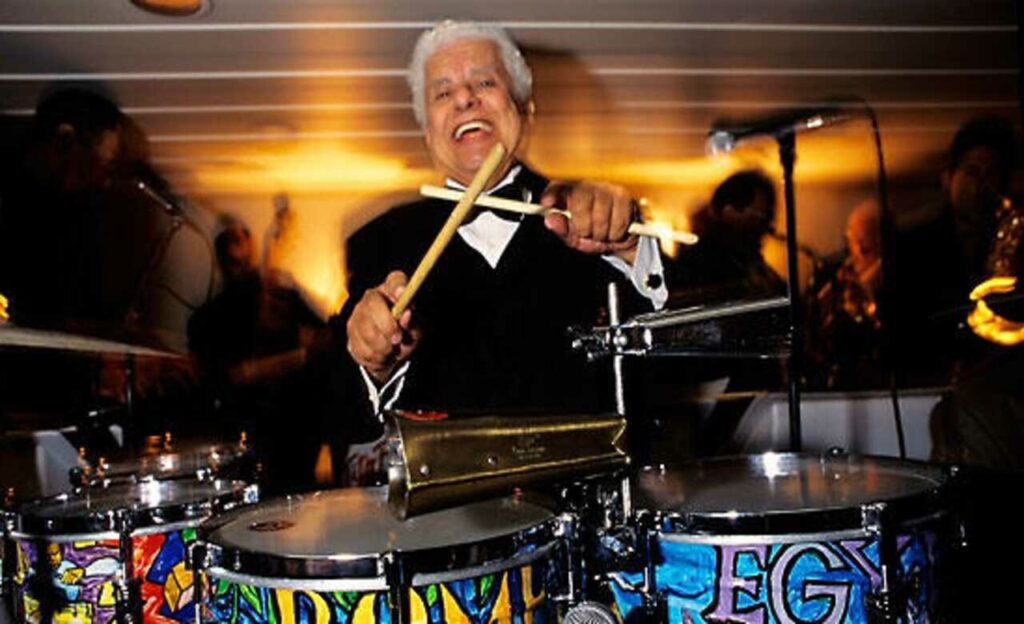Tito Puente is a talented Latin jazz percussionist, vibraphonist, cymbalist, saxophonist, pianist, conga and bongo player. The musician is rightfully considered the godfather of Latin jazz and salsa. Having dedicated over six decades of his life to the performance of Latin music. And having earned a reputation as a skilled percussionist, Puente became known not only in America, but also far beyond its borders. The artist is known for his magical ability to combine Latin American rhythms with modern jazz and big band music. Tito Puente released over 100 albums recorded between 1949 and 1994.
Tito Puente: Childhood and youth

Puente was born in New York's Spanish Harlem in 1923. Where a hybrid of Afro-Cuban and Afro-Puerto Rican music helped create salsa music (salsa is Spanish for "spice" and "sauce"). By the time Puente was ten years old. He played with local Latin American bands at local conventions, social events, and New York hotels. The guy danced well and was distinguished by the flexibility and plasticity of the body. Puente first performed with a local band called "Los Happy Boys" at New York's Park Place Hotel. And by the age of 13, he was already considered a child prodigy in the field of music. As a teenager, he joined Noro Morales and the Machito Orchestra. But he had to take a break in his work, as the musician was drafted into the navy. In 1942 at the age of 19.
The beginning of the creative path of Tito Puente
In the late 1930s, Puente originally intended to become a professional dancer, but after a serious ankle injury that ended his career as a dancer, Puente decided to continue performing and composing music, which he did best.

Puente befriended bandleader Charlie Spivak while serving in the Navy, and it was through Spivak that he became interested in big band composition. When the future artist returned from the Navy after nine battles, he received a President's Commendation and completed his formal music education at the Juilliard School of Music, studying conducting, orchestration and music theory under the most renowned tutors. He completed his studies in 1947 at the age of 24.
At Juilliard and for a year after completing his studies, Puente played with Fernando Alvarez and his band Copacabana, as well as José Curbelo and Pupi Campo. When in 1948, when the artist turned 25, he decided to create his own group. Or a conjunto called the Piccadilly Boys, which soon became known as the Tito Puente Orchestra. A year later, he recorded his first hit "Abaniquito" with Tico Records. Later in 1949, he signed with RCA Victor Records and recorded the single "Ran Kan-Kan".
Mamba Madness King 1950s
Puente began releasing hits in the 1950s, when the mamba genre was at its peak. And recorded popular dance songs such as "Barbarabatiri", "El Rey del Timbay", "Mamba la Roca" and "Mamba Gallego". RCA released "Cuban Carnival", "Puente Goes Jazz", "Dance Mania" and "Top Percussion". Puente's four most popular albums between 1956 and 1960.
In the 1960s, Puente began collaborating more extensively with other musicians from New York. He played with trombonist Buddy Morrow, Woody Herman and Cuban musicians Celia Cruz and La Lupe. He remained flexible and open to experimentation, collaborating with others and combining different musical styles such as mamba, jazz, salsa. Puente represented the transitional movement of Latin-jazz in the music of the time. In 1963, Puente released "Oye Como Va" on Tico Records, which was a resounding success and is considered a classic today.
Four years later, in 1967, Puente performed a program of his compositions at the Metropolitan Opera at Lincoln Center.
World recognition Tito Puente
Puente hosted his own television show called The World of Tito Puente which was broadcast on Latin American television in 1968. And he was asked to be Grand Marshal of New York in the Puerto Rico Day parade. In 1969, Mayor John Lindsey presented Puente with the key to New York City as a solemn gesture. Received universal gratitude.
Puente's music was not categorized as salsa until the 1970s, as it contained elements of big band and jazz composition. When Carlos Santana covered a classic hit in the early 1970s. Puente "Oye Como Va", Puente's music met the new generation. Santana also performed Puente's "Para Los Rumberos", which Puente recorded in 1956. Puente and Santana eventually met in 1977 at the Roseland Ballroom in New York.

In 1979, Puente toured Japan with his ensemble and discovered an enthusiastic new audience. As well as the fact that he has achieved worldwide popularity. After returning from Japan, the musician with his orchestra played for US President Jimmy Carter. As part of the president's celebration of Hispanic Heritage Month. Puente was awarded the first of four Grammy Awards in 1979 for "Tribute to Benny More". He also won a Grammy Award for On Broadway. In 1983, "Mambo Diablo" in 1985 and Goza Mi Timbal in 1989. During his long career, Puente has received eight Grammy Award nominations, more than any other musician. In the field of Latin American music until 1994.
XNUMXth album release
Puente recorded his last big band albums in 1980 and 1981. He toured European cities with the Latin Percussion Jazz Ensemble and also recorded new popular works with them. Puente continued to devote himself to composing, recording and performing music throughout the 1980s, but during this time his interests expanded.
Puente founded the Tito Puente Scholarship Fund for children with musical talents. The foundation later signed a contract with Allnet Communications to provide scholarships to music students across the country. The artist appeared on The Cosby Show and appeared in a Coca-Cola commercial with Bill Cosby. He also made guest appearances on Radio Days and Armed and Dangerous. Puente also received an honorary doctorate from Old Westbury College in the 1980s and performed at the Monterey Jazz Festival in 1984.
On August 14, 1990, Puente received a Hollywood star in Los Angeles for posterity. Puente's talent became known to the international public. In the early 1990s, he spent time speaking to foreign audiences. And in 1991, Puente appeared in the movie Mamba Kings Play Love Songs. Aroused interest in his music among a new generation.
In 1991, at the age of 68, Puente released his 1994th album titled "El Numero Cien", distributed by Sony for RMM Records. The artist was awarded the most prestigious ASCAP award - the Founders Award - in July XNUMX. Jon Lannert of Billboard wrote, "When Puente stepped up to the mic. Part of the audience exploded with an impromptu rendition of the Puente anthem "Oye Como Va".
Personal life
Tito Puente was married once. He lived with his wife Margaret Asensio from 1947 until her death (she died in 1977). The couple raised three children together - three children Tito, Audrey and Richard. Before his death, the beloved artist acquired the legendary status of a musician. A songwriter and composer who has been hailed by connoisseurs and music critics as the King of Latin Jazz. In Union City, New Jersey, he is honored with a star on the Walk of Fame in Celia Cruz Park and in Spanish Harlem, New York. East 110th Street was renamed Tito Puente Way in 2000. The musician died in 2000 of a heart attack.



